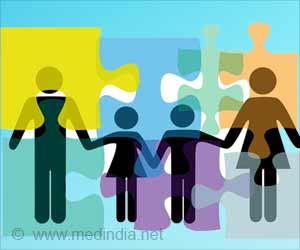Further, the latest UNFPA report stated that in India 25 percent of the population constitutes children aged 0-14, 18 percent are those aged 10-19 years, and 26 percent belong to the 10-24 age group. About 68 percent are in the 15-64 age category, while those above 65 are just 7 percent.
Advertisement
Exploring the Latest Demographic Shift
On the other hand, China has about 17 percent of the population under 14 years of age, 12 percent in the 10-19 age group, and 18 percent in the 10-24 age group.
While 69 percent are in the 15-64 age category, about 14 percent or nearly 200 million people are above the age of 65.
However, China is doing better than India in the context of life expectancy, which in the case of women is 82 and 76 that of men. The figures for India are 74 and 71, according to the report.
“The Indian survey findings suggest that population anxieties have seeped into large portions of the general public,” Andrea Wojnar, Representative for UNFPA India, said in a statement.
“Yet, population numbers should not trigger anxiety or create alarm. Instead, they should be seen as a symbol of progress, development, and aspirations if individual rights and choices are being upheld,” she said.
Meanwhile, the report also highlighted the issues of women’s decreased right to bodily autonomy.
Analyzing the New Global Population Figures
The SWOP report noted that 44 percent of partnered women and girls in 68 reporting countries do not have the right to make informed decisions about their bodies on matters of sex, contraception, and seeking health care. Close to 257 million women worldwide have an unmet need for safe, reliable contraception.
“So many women lack control over their bodies, including the right to have children – to decide when they want to have them and how many,” said Poonam Muttreja, Executive Director at Population Foundation of India, in a statement.
According to the fifth round of the National Family Health Survey (2019-21), India’s unmet need for contraception is 9.4 percent, indicating that even when couples want to adopt a contraceptive method, it is not available to them.
Moreover, early and forced marriages continue to happen – with nearly one out of every four women in India married before they turn 18. A Family and social norms have been pushing women into marriage and motherhood – leaving them without a choice.
“Even as India becomes the most populous country in the world, the programmatic discourse should focus on ensuring that comprehensive and equitable services are available to people regardless of where they live or which strata of society they belong to. At the same time, we need to make sure that girls and women are not pushed into early marriages and pregnancies, which limit their aspirations,” Muttreja added.
The UNFPA report recommends that governments must create policies with “gender equality and rights at their heart, such as parental leave programs, child tax credits, policies that promote gender equality in the workplace, and universal access to sexual and reproductive health and rights.”
Source: IANS



